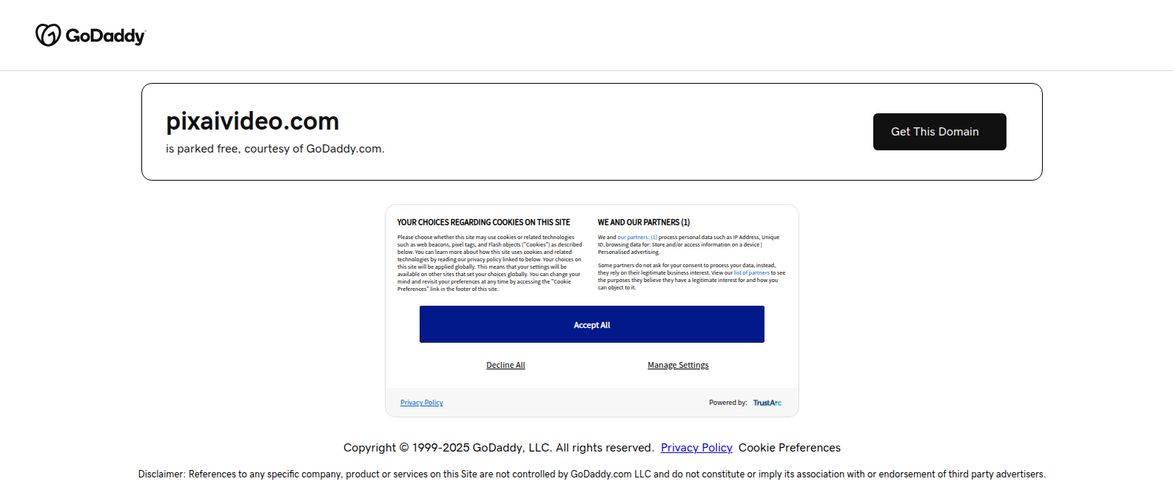I’ve been in the content and SEO game for a long time. I’ve seen trends come and go, from the keyword-stuffing dark ages to the rise of semantic search. But every once in a while, a tool pops up that makes me lean back in my chair and just say, “...whoa.” We're in the middle of an AI explosion, and video is the next great frontier. We've all seen those slightly clunky AI video generators, but I recently stumbled upon something that feels a bit different. A bit more... potent.
It's called TalkingAvatar.ai. And let me tell you, it's not just another web app for making a cartoon head say a few lines. This thing feels like it fell out of a sci-fi movie.
The promise is wild: rewrite video, clone voices, and perfectly lip-sync new dialogue without needing a camera crew, a fancy studio, or even re-shooting a single frame. It’s the kind of tool that could fundamentally change workflows for creators, marketers, and honestly, anyone who’s ever flubbed a line on camera and groaned at the thought of a do-over. So, naturally, I had to take a look.
Visit TalkingAvatar
So, What Exactly is TalkingAvatar.ai?
At its core, Talking Avatar is a downloadable desktop application (we'll get to the 'why' on that in a minute) that lets you manipulate video content using AI. Think of it less as a video creator and more as a video rewriter. You take existing footage of someone speaking, and then you can make them say something completely new. The platform uses a combination of AI-powered voice cloning and hyper-realistic lip-syncing to make it happen. You can create an entirely new narrative from old footage, fix a mistake in a presentation, or even translate your content into another language using your own cloned voice. It’s a bit like having a digital puppeteer for your video clips.
The Features That Actually Made My Jaw Drop
Look, I see feature lists all day. They usually have a lot of fluff. But a few of Talking Avatar's capabilities genuinely stand out. These aren't just bullet points on a sales page; they're solutions to real, nagging problems.
One-Sentence Voice Cloning: Seriously?
This is the big one. The showstopper. Talking Avatar claims it can create a high-quality clone of your voice from a single sentence of audio. One. Sentence. My brain immediately started racing. Think of the possibilities! You could feed it one clean line from an old recording and then generate an entire new script for a YouTube video. No more worrying about your mic setup or background noise for new recordings. You could redub your own videos for different markets, maintaining the authenticity of your own voice. a total game changer. There's a part of me that finds the tech slightly spooky, but the creator in me is just buzzing with ideas.
Lip-Sync That Doesn't Look Like a Bad Dub
We've all seen it. That horrible, uncanny valley lip-sync where the mouth movements are just... off. It's distracting and immediately screams “fake.” Talking Avatar seems to have poured a lot of energy into solving this. What's more impressive is its “One-Click Multi-Speaker Lip-Sync.” This means if you have a video with two or more people, like an interview or a podcast, the AI can distinguish between the speakers and sync new audio to each person individually. For podcasters looking to easily create a video version of their show, this is huge. You could potentially feed it your audio track and a simple video of the hosts, and let the AI do the heavy lifting of animating the conversation.
The Stream Avatar: Ditch Your Webcam
Here’s a feature for the modern age of remote work and streaming. The Stream Avatar lets you replace your live camera feed in apps like Zoom, Twitch, or Discord with an AI-generated avatar of yourself that is animated by your voice in real-time. Had a rough night? Bad hair day? Don't want to show your messy office? Just fire up your digital twin. It’s a step beyond simple Memojis or filters. It’s you, but an idealized, always-camera-ready version. For streamers, it’s a way to build a unique persona. For professionals, it’s a way to maintain presence without sacrificing privacy.
Who is This AI Sorcery For?
While the tech is cool for anyone to play with, I see a few groups getting massive value out of this platform. It’s not just for hobbyists.
- Content Creators & YouTubers: This is the obvious one. Fixing mistakes without a reshoot is the holy grail. Imagine recording a 20-minute video, and noticing you said a statistic wrong. Instead of setting up the lights and camera again, you just type the correction. Boom. Done.
- Marketers and Advertisers: A/B testing video ads just got infinitely easier. Create one master video, then generate ten different versions with slight variations in the call-to-action or opening hook. No need for the on-screen talent to come back to the studio.
- Educators and Corporate Trainers: How often does a training manual or online course become outdated because one small detail changed? With this, you could update your video learning modules in minutes, not days, using the original instructor's cloned voice.
- Podcasters: As I mentioned, turning an audio-only podcast into an engaging, multi-speaker video has always been a chore. This tool could automate a huge chunk of that process, opening up YouTube as a major growth channel.
The Catch: Hardware, and… Uh… Pricing?
Okay, let's ground ourselves in reality for a second. This kind of power doesn't come from a simple cloud server without a cost. First, the System Requirements. This is a desktop app for a reason - it needs some serious local horsepower.
The recommended specs are an Intel Core i7-9700 or AMD Ryzen 7 3800 processor, 16 GB of RAM, and, crucially, an NVIDIA RTX 20 series or better graphics card. This isn’t going to run on your average work laptop. The heavy AI processing requires a dedicated, powerful GPU. So, before you get too excited, check your rig.
And now for the other elephant in the room. The pricing. I clicked over to their pricing page, full of optimism, and was met with... well, a mystery. They show a free tier, which is great for trying the core features. But the paid tiers for “occasional,” “frequent,” and “heavy” users? They're all blank. No numbers. Just a “Get Started” button.
My guess? They might be using a credit-based system, or perhaps the pricing is still being finalized as they roll out. While I appreciate a free entry point, the lack of transparency is a bit of a hurdle. I can't tell you if it's a bargain or a budget-breaker, because they simply don't say. That's a bit of a misstep in my book, but maybe they'll update it soon.
Frequently Asked Questions About Talking Avatar
- What is Talking Avatar in simple terms?
- It's a desktop app that uses AI to let you change what someone says in a video. It clones their voice and matches their lip movements to the new words, so you don't have to re-record anything.
- Can I really clone a voice from just one sentence?
- According to their site, yes. The technology is designed to capture the unique characteristics of a voice from a very small audio sample, which you can then use to generate new speech.
- What kind of computer do I need to run it?
- You need a fairly powerful Windows PC. The key is the graphics card—they recommend an NVIDIA RTX 20-series or newer. It also requires at least 8GB of RAM, with 16GB being the recommended amount for smoother performance.
- Is Talking Avatar free?
- There is a free version that lets you try the core features. However, the costs for the paid, more advanced tiers are not currently listed on their website, so the full pricing structure is unclear.
- Can I use this for my live Zoom meetings?
- Yes! The Stream Avatar feature is designed specifically for that. It lets you use an AI-powered avatar as your camera source in platforms like Zoom, Twitch, and others.
- Does the lip-sync work for videos with more than one person?
- It does. The platform includes a feature for multi-speaker lip-sync, which can identify different people in a video and apply the correct audio and lip movements to each one.
My Final Verdict on Talking Avatar
So, where do I land on TalkingAvatar.ai? I'm genuinely impressed. The technology itself is a significant step forward from a lot of the AI tools I’ve seen. The focus on rewriting rather than just creating from scratch is a smart, practical angle that solves a ton of real-world problems for video professionals. The voice cloning and multi-speaker lip-sync are killer applications.
The hurdles are clear: you need a beast of a machine to run it, and the pricing is a complete question mark. But despite that, I'm optimistic. This feels like a glimpse into the future of post-production. A future where video is as easy to edit as a Word document. And for a content guy like me, that's a very exciting future indeed.



